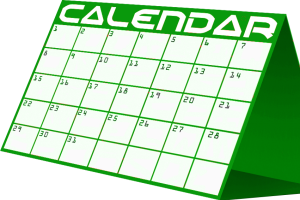Apportioning tax relief between business and private use
My husband and wife clients run a small bed and breakfast business in their own home with turnover of about £10,000 p.a. In addition to the rooms used solely by my clients, there are three bedrooms which are used for this low level of letting, while for the remainder of the year they are available for letting or are used by the family on occasional visits. The cost of food and materials for lettings are kept entirely separate from costs for personal use by my clients.
My query relates to how relief for water, rates, interest, light and heat, etc. for the business may be calculated and also how capital allowances may be claimed for such items as vacuum cleaners and cookers which are used for business and private purposes. The HMRC website does not provide any assistance, nor can I find any published texts. I feel that the agreements with hotel owners, etc. are inappropriate for use in this case.
Can Taxation readers offer any advice as to how I should proceed?
Query 17,259 – Cricket
Reply from New Road
I believe that the answer is simple. Basically, Cricket’s client can claim for those expenses that are wholly and exclusively incurred for the purposes of the trade. HMRC’s view (as set out in their Business Income Manual at BIM47810) is as follows. ‘Wholly and exclusively does not mean:
- business expenditure must be separately billed; or
- part of the home must be permanently used for business purposes and not used for any other purpose at any other time.
‘Wholly and exclusively does mean that when part of the home is being used for the business then that is the sole use for that part at that time. Thus if the part of the home used for business purposes is also, at the same time, used for some other non-business purpose, no deduction is due.’
The difficulty will come when Cricket tries to apply these rules. There are some helpful comments and some guidance can be found in paragraphs BIM47805 onwards.
Basically, a calculation needs to be done of the amount of time that the rooms are used for business. Then a calculation of the total costs and a formula based on amount of use applied to those costs. For rates, etc. it could be floor space. For the cooker, etc. it could be on the number of meals since it is being used for business only for breakfast. Some specific examples are given in the manual.
Cricket should take comfort from the statement, ‘if there is only minor business use of the home you may accept a reasonable estimate consistent with the underlying facts’. I am sure that any inspector of taxes will be aware of the manual, which changed a couple of years ago, and any challenge will be reasonable.
Reply from Goldstone
The answer to this query can be found by looking at the well-known position of taxpayers using part of their home for business purposes. This leads us to ITTOIA 2005, s 34 and the application of the ‘wholly and exclusively’ test. HMRC’s Business Income Manual at BIM47800 (‘Specific deductions – use of home’) gives a useful guide to what might be expected as allowable.
We are told the home is divided with business use being made of three bedrooms, either for bed and breakfast, or for letting. There are also occasional periods when the rooms are used by visiting members of the clients’ family. Although not queried, the letting periods may well potentially qualify for ‘rent-a-room’ relief.
Starting with BIM47805, the manual says that ‘the home has a dual role for many self-employed people. It is where they live and also where they carry on some or all of their business’.
Paragraph BIM47810 defines ‘wholly and exclusively’ as meaning ‘when part of the home is being used for the business then that is the sole use for that part at that time.
Thus if the part of the home used for business purposes is also, at the same time, used for some other non-business purpose, no deduction is due’.
In fact, as mentioned above, we have been told that the situation is of an ‘either or’ position. The paragraph then goes on to say that if the part of the home in question is used for business purposes for a period of time only, then it is that period to which the allowable expenses relate, and they need to be calculated on a time apportioned basis.
BIM47815 (‘Apportioning the expenditure’) gives an exampled guide as to ‘how to’ and ‘on what basis’ the apportionment is calculated. It starts with the judgment of Templeman J in Caillebotte v Quinn [1975] STC 265, where he states:
‘It is possible to apportion the use and cost of a room on a time basis, and to allow the expense of the room during the hours in which it is used exclusively for business purposes, in the same way as it is possible to calculate the business expenses of a car which is sometimes used for business purposes exclusively and sometimes used for pleasure.
‘In arriving at the proportion of allowable expenses, you need to establish the underlying facts…’, and then following on from this mentions ‘In many cases there is more than one method of arriving at a reasonable apportionment and this guidance is not intended to be prescriptive.’
The factors applying to the apportionments of the business expenses are then outlined under area, usage and time with the provision that ‘the method of apportioning an expense depends on the relative importance of each of these factors’. Paragraph BIM47820 gives useful details as to the allowability of expenditure falling into two categories – fixed costs and running costs. There are then examples given under BIM47825.
In this case, the controlling apportionment factors are the days (time) that the three rooms are not available for business usage, and their area in relation to the whole property.
Regarding capital allowances, again, apportionment of the relief as above will depend on business and non-business use of the rooms, with the usage and time factors coming into play.
Therefore, based on usage and the total areas of the rooms, no doubt Cricket will be able to work out the necessary percentages of the total expenses that need to be apportioned for business/private use.
Reply from Magnus
In effect, the husband and wife clients are running a business from home, so that the principles of use of home for business purposes apply. For many years expenses in connection with the use of home for business purposes were dealt with on a concessional basis, as they represented dual purpose expenditure.
Because so many people now operate their businesses from home, HMRC has recognised this phenomenon, which has resulted in entries in the Business Income Manual at BIM47805 to BIM47825. The effect of the department’s views is that a proportion of direct and variable expenditure may be claimed against business income. BIM47815 stresses that the calculation must be made on the basis of area, usage and time.
BIM47820 explains in detail that a proportion of fixed costs may be claimable. These include council tax, mortgage interest, insurance, water rates and general repairs. A proportion of variable expenses such as light and heat, cleaning, metered water and telephone charges are also claimable.
In the case of the clients Cricket needs to assess the number of main rooms in the property (excluding bathrooms, toilets and kitchens) and then calculate the direct and variable expenses based on a proportion of three rooms to the total main rooms in the property.
The resulting figure then needs to be reduced by a percentage representing the number of weeks the bedrooms are occupied by visiting family members. It is considered that no restriction need be made for other weeks when the bedrooms were unoccupied, but available for letting. The proportion of telephone charges should be made on the basis of business usage compared with total usage.
HMRC’s Capital Allowances Manual at CA27005 deals with the situation where plant and machinery is used partly for business, and partly for private purposes. The calculation is similar to that for motor vehicles where there is some private use.
In this instance, capital allowances may be claimed on a proportionate basis for vacuum cleaners, cookers and other items used partly for business purposes. The calculation will be on the basis of number of weeks when the rooms are let and total use compared with use for the letting guests. The resulting figure is likely to be quite small.
The clients should be reminded that there will be some loss of capital gains tax main residence relief, subject to lettings relief, when the property is sold. If the business is a furnished holiday letting inheritance tax business property relief is likely to be due.









